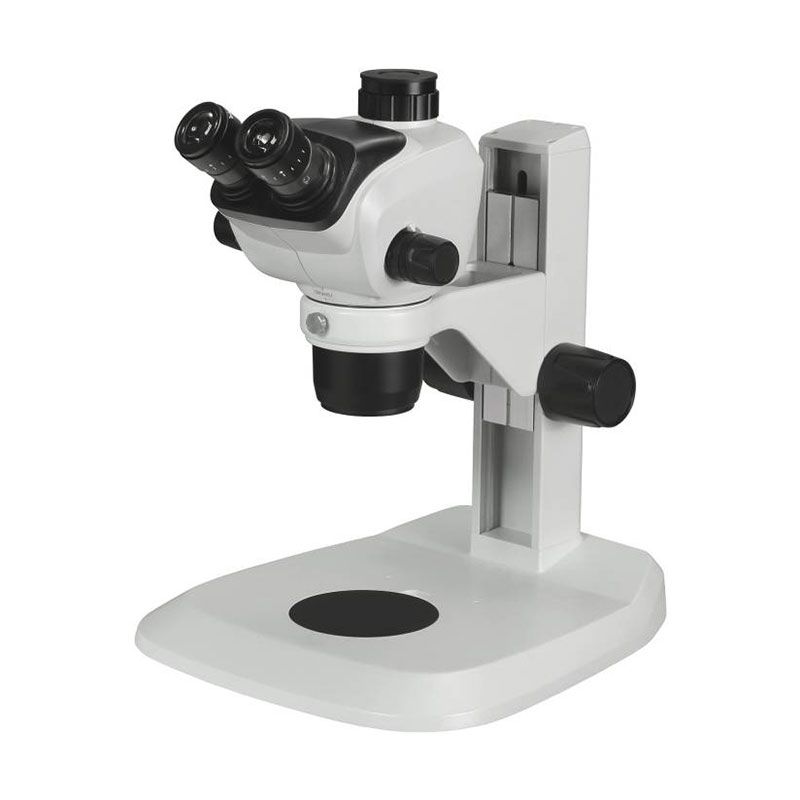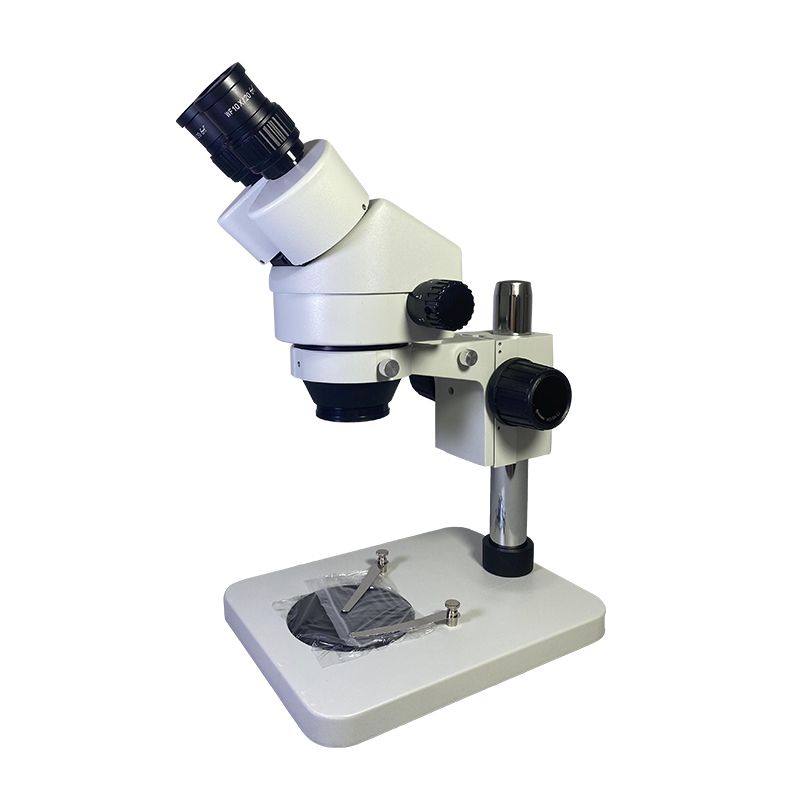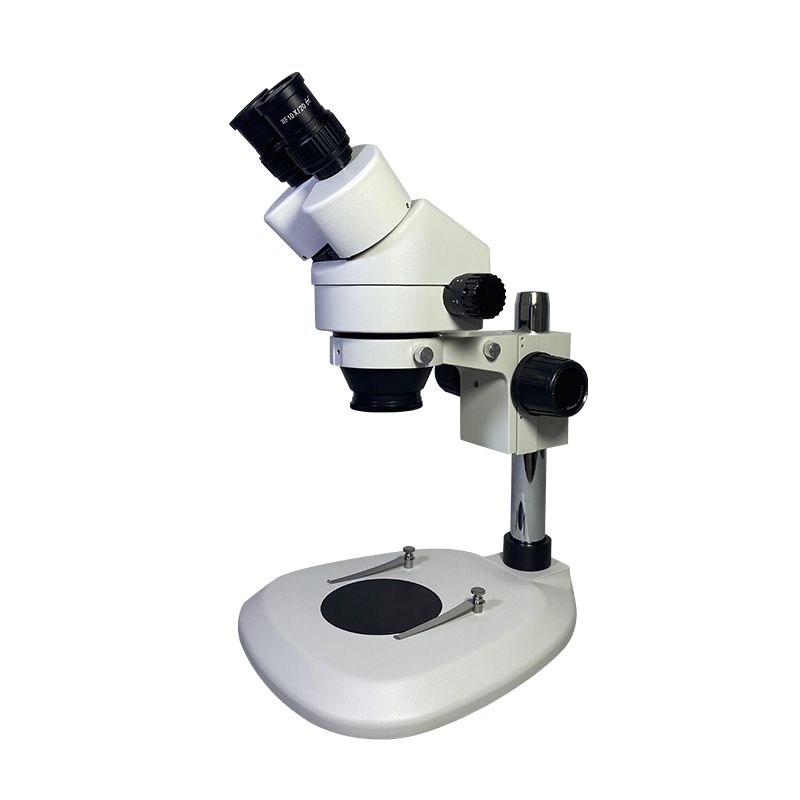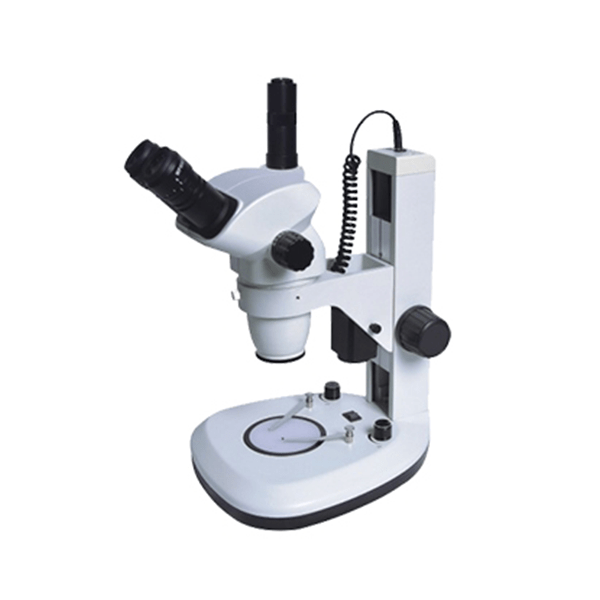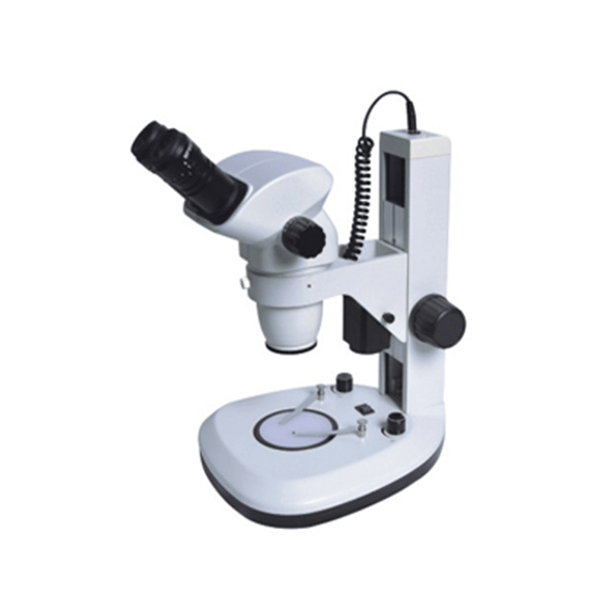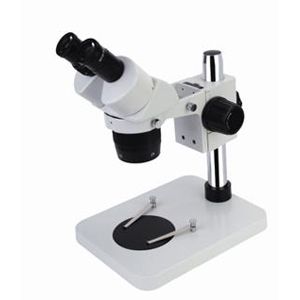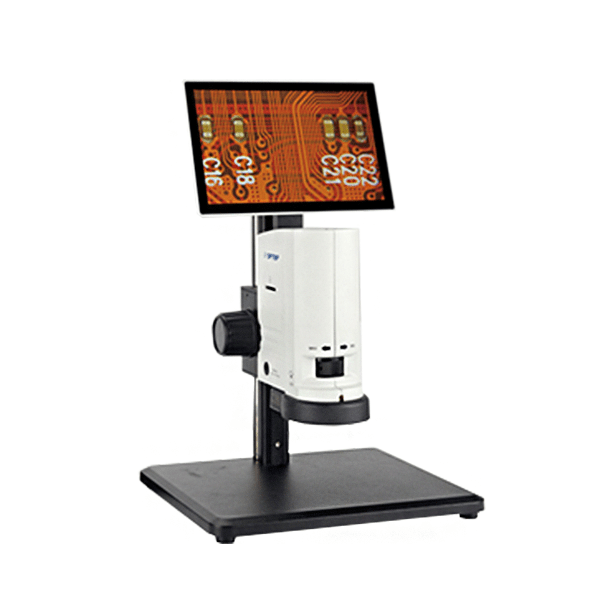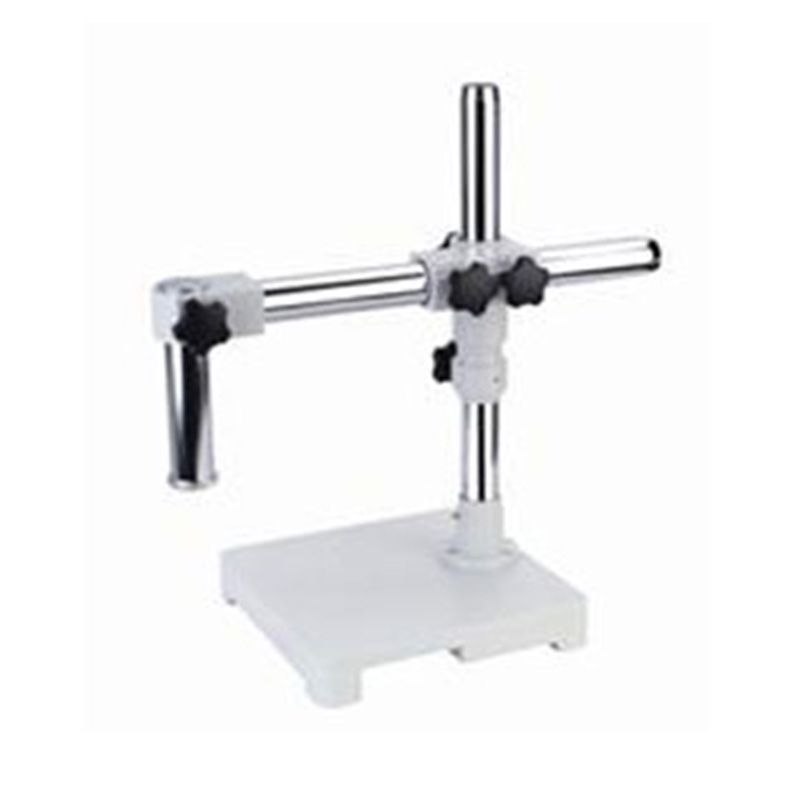In the world of magnification, stereo microscopes, also known as dissecting microscopes, provide a distinct perspective. Unlike their more powerful counterparts, compound and stereo microscopes provide a three-dimensional view of objects at low magnification. This 3D effect is achieved through their dual optical paths, which allow each eye to view the specimen from a slightly different angle, simulating natural vision. While stereo microscope magnification typically ranges from 10x to 80x, their strength lies in their ability to see an object’s surface features and overall structure in great detail. This makes them ideal for tasks that require accurate depth perception and specimen manipulation. Unlike compound microscopes, which require very thin samples illuminated from behind, stereo microscopes allow for the observation of thicker, opaque objects under reflected light, providing a broader range of applicability in a variety of fields.
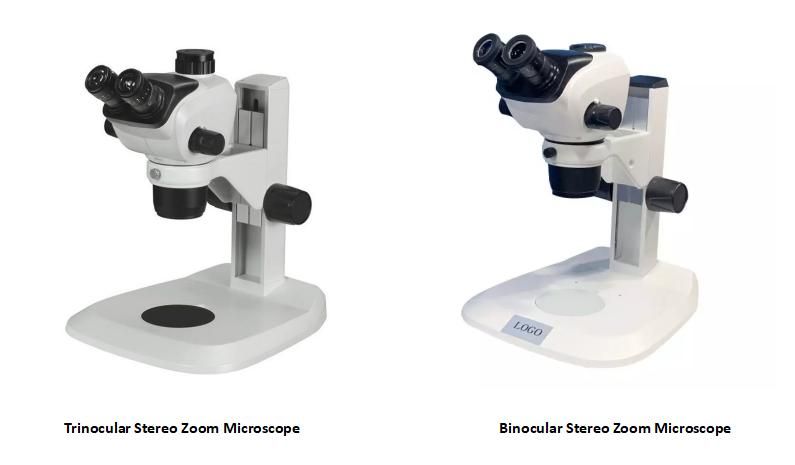
Different Types of Stereo Microscopes
| Type of Stereo Microscope | Description | Advantages | Disadvantages |
| Stereo Zoom Microscopes | Stereo zoom microscopes are the most popular type of stereo microscope. They have a zoom lens, which allows you to adjust the magnification without changing the objective lens. This makes them adaptable and useful for a wide range of applications, including dissecting specimens, examining electronics, and inspecting coins and stamps. Scopelab provides XTL7045, XTL7045-J, SZX6745, XTL6555 Series Zoom Stereo Microscope. | They are versatile and can be used in a variety of settings. | They can cost more than other types of stereo microscopes. |
| Digital Microscopes | A digital microscope includes a digital camera that allows you to view and capture images of the specimen on a computer screen. This allows you to send images and videos of the specimen to others. Digital microscopes are commonly used in educational and research settings. DMSZ7 Series Video Zoom Stereo Microscope provided by Scopelab is an example. | They allow you to send images and videos of the specimen to others. | They can cost more than other types of stereo microscopes. |
| Gemological Microscopes | Gemological microscopes are designed specifically to examine gemstones. They include features that are especially useful for gemologists, such as a built-in light source and polarizer. Jewelers, gemologists, and other gemstone-related professionals use gemological microscopes. | They include features that are particularly useful for gemologists, such as a built-in light source and polarizer. | They can cost more than other types of stereo microscopes. |
| Boom Stand Stereo Microscopes | Boom stand stereo microscopes feature a boom stand that allows you to move the microscope head across a large area. This makes them ideal for applications that require the ability to move the microscope, such as dissecting large specimens or inspecting objects on a conveyor belt. | They are adaptable and can be used for a wide range of applications. | They can cost more than other types of stereo microscopes. |
Uses of a Stereo Microscope
Stereo microscopes, with their 3D view and low magnification, find use in a variety of fields. Here’s a breakdown of their applications in various sectors:
Biological Sciences
- Dissection: Their ability to perceive depth makes them ideal for dissecting small organisms such as insects, plants, and even some organs in larger animals.
- Entomology: Stereo microscopes make it easier to study intricate details of insects, such as their body parts and wings.
- Botany: Stereo microscopes provide a 3D view of flowers, seeds, and other plant parts, which is useful for examining their structure.
Geology and Material Sciences
- Mineral Examination: Stereo microscopes help identify minerals and study their physical properties, such as texture and crystal formation.
- Fossil Analysis: Stereo microscopes enable detailed examination of fossils and their surface features.
- Quality Control: Stereo microscopes can be used to inspect materials for defects such as cracks or uneven surfaces in a variety of industries.
Other Applications
- Forensics: Analyzing evidence such as fibers, hair, and other small objects with depth perception is critical in forensic investigations, which is where stereo microscopes come in handy.
- Electronics: Stereo microscopes, which can magnify intricate details, are commonly used to repair and inspect circuit boards for faulty components or soldering issues.
- Manufacturing: Stereo microscopes are used for quality control in a variety of industries, including inspecting printed circuit boards and checking for flaws in manufactured parts.
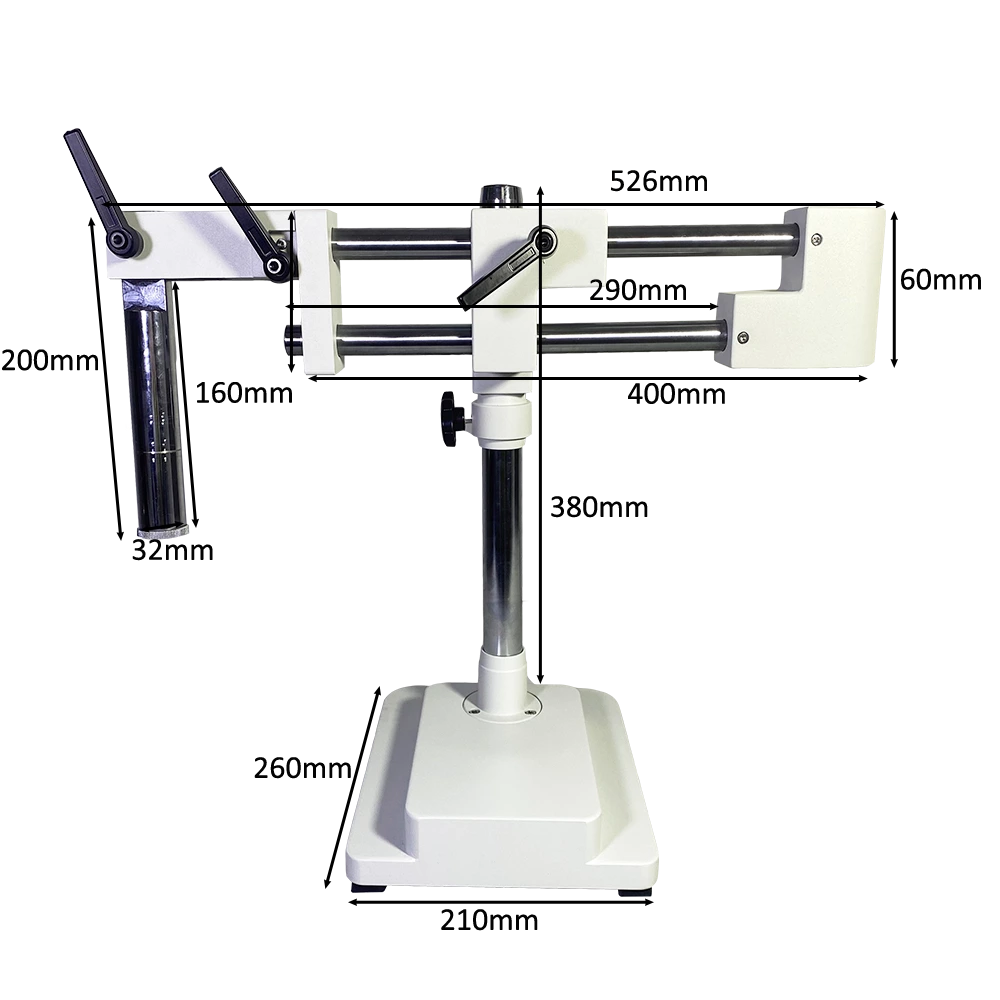
What Factors Should Be Considered When Choosing a Stereo Microscope?
Factor 1: Magnification Range
Magnification requirements vary depending on the application. Choosing the correct range allows you to see the specific features of interest. While high magnification may appear desirable, it can be counterproductive. Highly magnified images frequently lose clarity and field of view. If your primary goal is to observe the overall structure of a specimen, a lower magnification within a reasonable range will provide a better overall view. In essence, the magnification range you select determines the amount of detail you can see and your ability to interact with the specimen. Choosing the appropriate range ensures that your stereo microscope meets your specific needs and observation goals.
Factor 2: Working Distance
Working distance refers to the distance between the objective lens and the stage where you place your sample. A longer working distance provides more space for you to manipulate the specimen under the microscope. A comfortable working posture is vital, especially during extended microscopy sessions. A longer working distance allows you to maintain a comfortable distance from the microscope, reducing neck and eye strain. If manipulation and maneuvering are essential, prioritize a stereo microscope with a longer working distance to ensure a smooth and efficient workflow.
Factor 3: Illumination
Proper illumination allows you to see the specimen and identify key features. Different types of illumination, such as transmitted or reflected light, are more appropriate for certain samples. Transmitted light is effective for thin, translucent specimens, whereas reflected light is best for opaque objects. Choosing the right illumination maximizes contrast, highlighting details and textures that would otherwise be obscured. Understanding these techniques, as well as the capabilities of various illumination systems, allows you to extract as much information as possible from your observations. In conclusion, illumination is critical to the quality and efficiency of your stereo microscope observations. You can achieve optimal illumination for a clear, informative, and comfortable viewing experience by taking into account the type of specimen, desired level of detail, and potential specialized techniques.
Factor 4: Image Quality
High image quality means sharper, clearer images with higher resolution. This allows you to see fine details in your specimen, such as minute structures, color variations, and surface textures. In fields such as biology, where precise feature identification is critical, high-quality images are required for accurate observations and analyses. While a lower-quality image may be adequate for current needs, consider future applications. Choosing a microscope with high image quality increases your flexibility and adaptability. As your skills and needs develop, you’ll be able to investigate a broader range of specimens and applications that require more in-depth observation. To summarize, image quality is more than just an aesthetic consideration; it has a direct impact on the accuracy and effectiveness of your stereo microscope work. Choosing a microscope with high image quality ensures that you can see the fine details that are most important for your specific requirements and potential future applications.
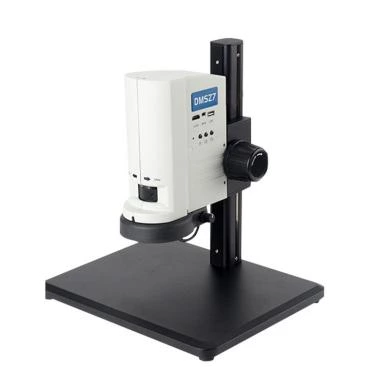
Conclusion
Stereo microscopes provide a three-dimensional view, allowing you to see spatial relationships and fine structures in specimens. This enhanced visualization is critical in a variety of fields, including biology, entomology, geology, and forensics. Quality control across industries is heavily reliant on the ability to detect minor flaws. Stereo microscopes enable professionals in electronics manufacturing to inspect circuit boards for faulty components, as well as material scientists to analyze surface defects. This meticulous examination ensures the product’s quality and safety. Understanding stereo microscopes gives you access to a powerful tool that can help you explore the world around you, whether for professional or educational purposes or simply to satisfy your curiosity about hidden wonders in plain sight. Scopelab is a reliable microscope supplier if you need it please contact us.
